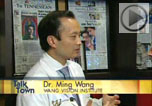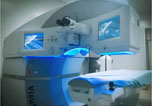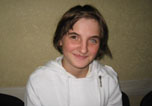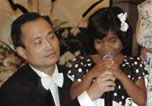- Over 55,000 LASIK and cataract procedures (including on over 4,000 doctors)
- The FIRST center in TN to offer Laser Cataract Surgery
- Introduced bladeless all-laser LASIK to the state
- Implanted the state's first FOREVER YOUNG™ Lens
- The first surgeons in the US to perform a new Intacs surgery to treat keratoconus
- Helped patients from 40 states and 55 countries
- International referral center for cataract surgery and LASIK complications
- Read Dr. Wang's book: LASIK Vision Correction
Why did you decide to have LASIK? Why did you choose Dr. Wang? How has your life changed since your LASIK procedure?
What is your advice for people considering LASIK?
Click to read more
| Home | Print This Page |
Pterygium management
Wang Vision 3D Cataract and LASIK Center, Nashville, Tennessee
To read Pterygium Removal Surgery testimony of Laura Cozztarto, click here...
Dr. Wang introduced a new pterygium removal procedure procedure using an amniotic membrane contact lens, which he invented (click here), and performed the first such surgery in the state. Dr. Wang's new procedure is essentially painless, the chance of pterygium recurrence after surgery has been signficantly reduced and the patient typically returns to work on the very next day. Since Dr. Wang specializes in the treatment of pterygium, he has helped patients from over 20 states in the US and dozen countries worldwide.
- Click here to read frequently asked questions about Pterygium
In the pterygium surgery field, Dr. Wang has been at the forefront of reseach and development of new surgical techniques, he
- Published the first paper in the scientific literature with Dr. Tseng about their successful laboratory demonstration of reduction of corneal scar and keratocyte apoptosis with amniotic membrane transplantation;
- Obtained a US patent and made the world's first amniotic membrane contact lens;
- Wrote a chapter in "Ophthalmology " textbook about pterygium surgery;
- Edited a book "Corneal dystrophy and degeneration" (published by American Academy of Ophthalmology) which describes the natural history of pterygium;
- Introduced the new pterygium procedure to the state, which involves removing pterygium followed by amniotic membrane placement with a contact lens.
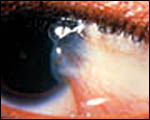
A pterygium is a raised, wedge-shaped growth of the conjunctiva. Patients suffering from this problem often report irritation, redness, tearing, light sensitivity and foreign body sensation. In early stages, tears and supportive therapy are typically prescribed. It is most commonly caused by sun exposure, so protecting the eyes from sun, dust and wind is recommended. Instilling artificial tears liberally is also helpful. In some cases, steroid drops are prescribed to reduce inflammation.
If the pterygium does grow over the cornea, vision may be affected and surgical removal is necessary. Surgery tends to be complicated by recurrence of the lesions, and it is not uncommon for patients to need repeated surgeries to correct the problem. Simple removal of the lesions may result in recurrence in as many as 50% of patients.
In an effort to reduce the surgical risk, decrease inflammation and pain post-operatively, and decrease the risk of recurrence, Dr. Wang performs pterygium surgery using an amniotic membrane applied with a contact lens. The amniotic membrane helps the wound to heal correctly, reducing the chance of the pterygium growing back.
If you're interested in finding out more about pterygium surgery, choose experience and technology. Choose Wang Vision 3D Cataract and LASIK Center of Nashville, Tennessee. Call or email us today.
Our new texbooks
A 501c(3) charity that has helped patients from over 40 states in the US and 55 countries, with all sight restoration surgeries performed free-of-charge.




